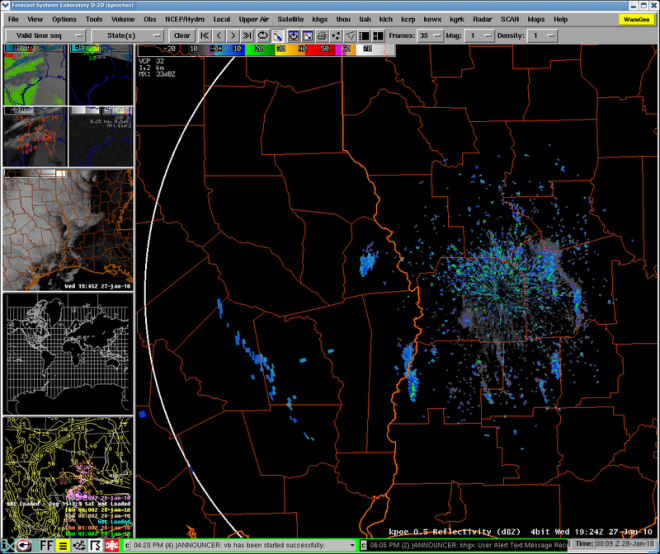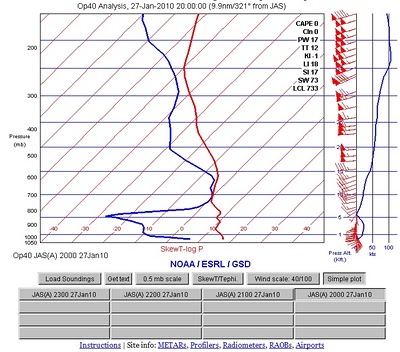The daytime MODIS pass over Southeast Texas/Louisiana highlighted an interesting feature. The 1944z 1/26/2010 fog product pass clearly showed 3 “hot spots” that did not show up in the GOES visible product nor in the MODIS visible. An altocumulus deck was developing and expanding northeast throughout the day and across the two northern burn sites.
MODIS fog product 1944z
 |
GOES Visible 1945z
 |
1915z
 |
1924z
 |
1934z
 |
1944z
 |
1954z
 |
2004z
 |
RUC Sounding at KJAS-Jasper Texas
The RUC sounding indicates the presence of the AC/mid level moisture transport from SW to NE and the mixing layer transport winds.
The plumes can be clearly seen on the radar imagery sequence and in the Modis fog product. Interestingly this is during the day, not a time that the fog product would typically be used. And that the plumes are visible beneath or through a mid level deck may have some uses. Perhaps the plume has extended above the mid level deck but this seems unlikely given the circular nature of the highlighted instead of being stretched downwind to the ENE as the cloud movement would support, and the radar plumes clearly show the low level trajectory northward albeit these images are only the 0.5 degree slices. The 0.5 degree beam height was approximately 4400 ft for the plume to the WNW of the KPOE radar and 1800 ft for plume to the east of the radar.
It would be interesting to find out if others have noted this in other areas or under different cloud regimes.
Kent Prochazka
Forecaster at Houston/Galveston






















You must be logged in to post a comment.